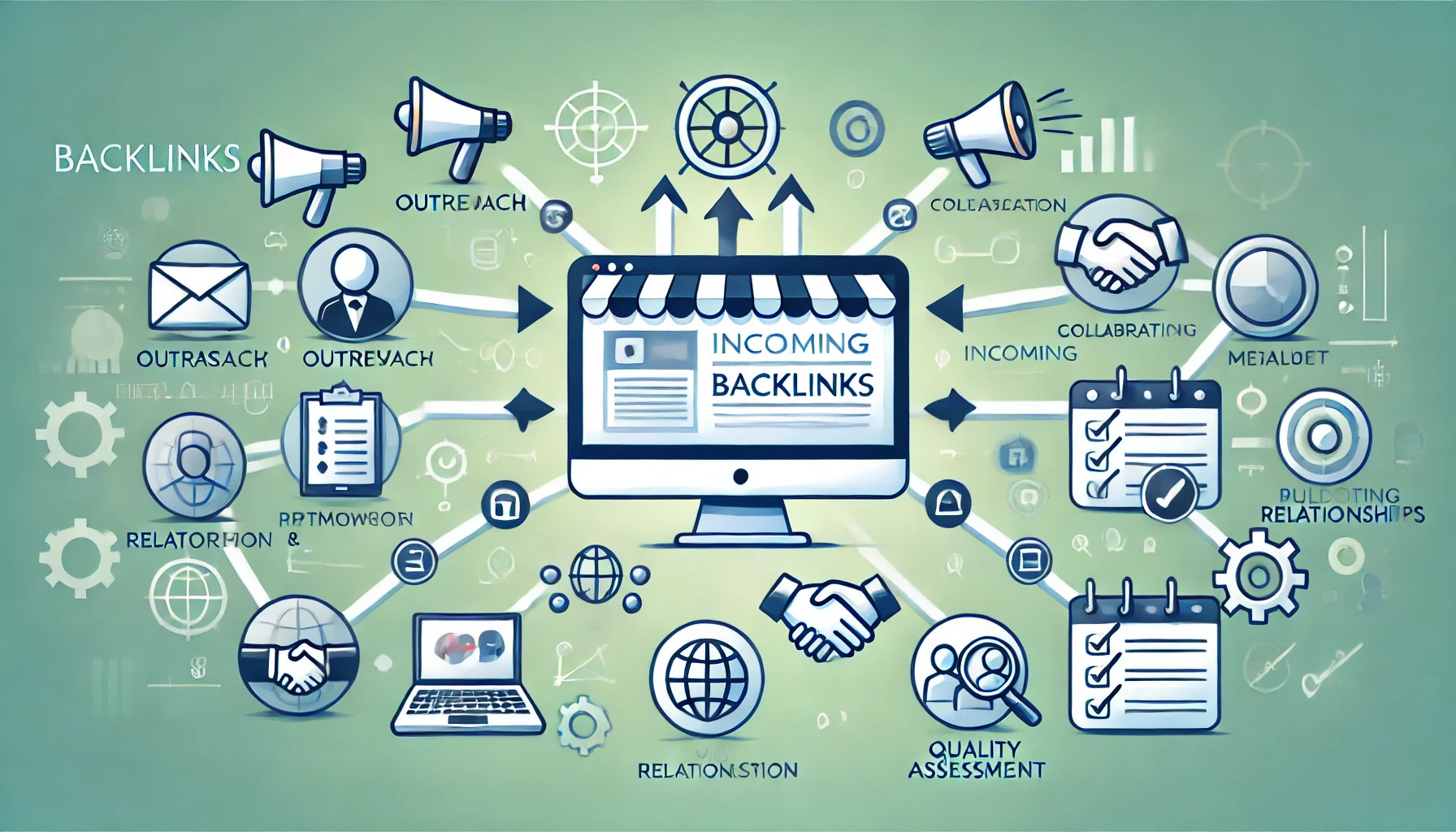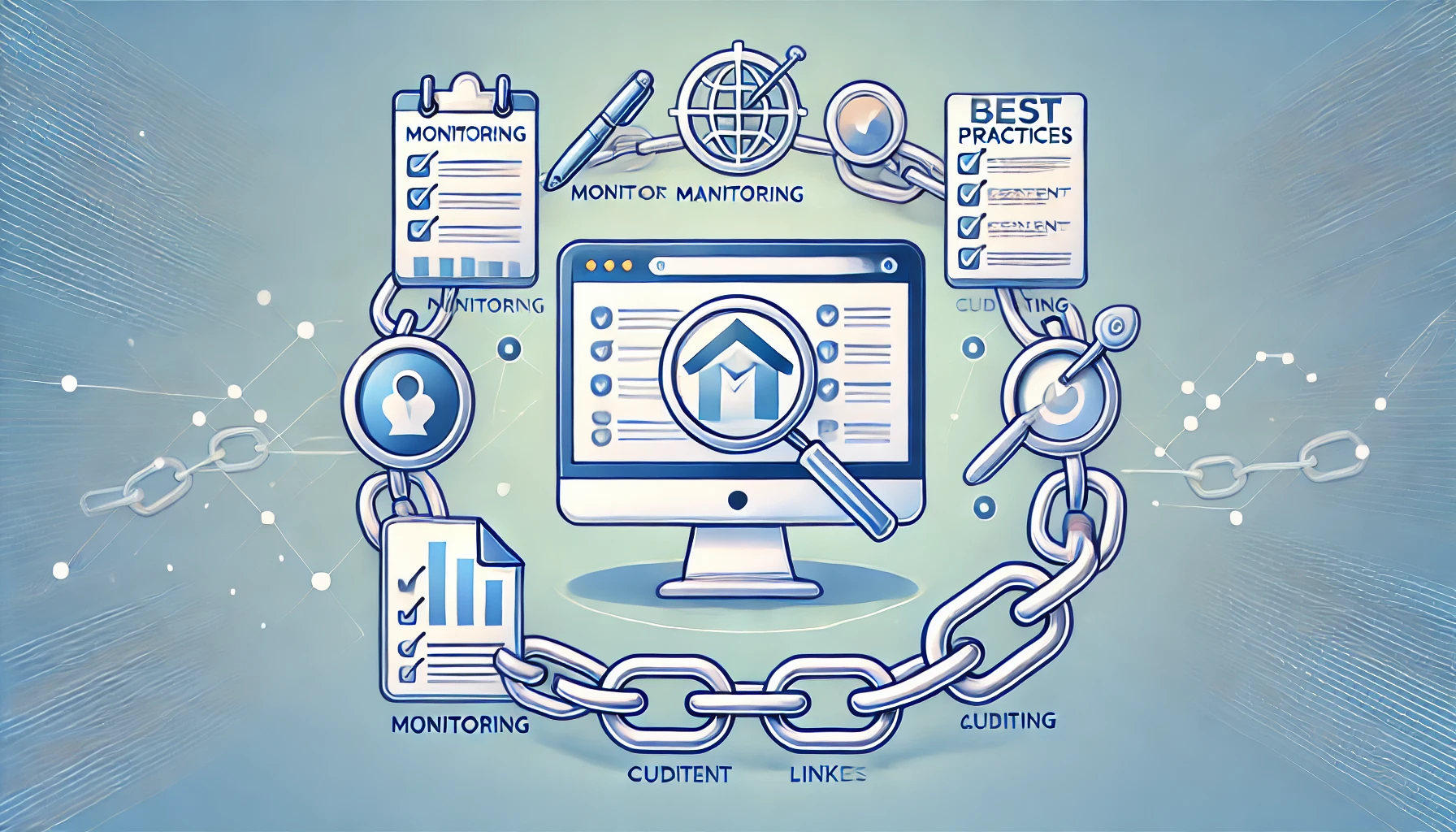Online visibility refers to the prominence and accessibility of a website or online content in digital spaces, particularly on search engines. It involves the extent to which a website can be discovered and accessed by its target audience.
Table of Contents
Toggle2. Importance of Online Visibility
- Driving Traffic: Increased visibility leads to higher website traffic, attracting more visitors and potential users.
- Building Credibility: Websites that appear prominently in search results are perceived as more credible and trustworthy.
- Achieving Goals: For government websites, high visibility ensures that public information reaches a wider audience, fulfilling transparency and informational goals.
3. Components of Online Visibility
- Search Engine Optimization (SEO):
- methods for raising your position on search engine results pages (SERPs).
- comprises the creation of excellent content, meta tag optimization, and keyword optimization.
- Content Marketing:
- Creating and distributing valuable, relevant content to attract and engage audiences.
- Involves blog posts, articles, infographics, and videos.
- Social Media Presence:
- Utilizing platforms like Facebook, Twitter, and LinkedIn to reach and interact with users.
- Sharing content and engaging in conversations to increase reach.
- Backlink Building:
- Acquiring links from other reputable websites.
- Enhances domain authority and improves search rankings.
- Local SEO:
- Optimizing for local search queries.
- Important for government websites to provide local services and information.
4. Strategies to Enhance Online Visibility
-
- Optimizing Website Content:
- Ensuring all content is relevant, informative, and optimized for target keywords.
- Regularly updating and refreshing content to maintain relevance.
- Building High-Quality Backlinks:
- Engaging in link-building strategies to earn backlinks from authoritative sites.
- Participating in collaborations and partnerships.
- Leveraging Social Media:
- Actively engaging on social media platforms.
- Sharing valuable content and responding to public queries.
- Utilizing Analytics:
- Using tools like Google Analytics to monitor website performance.
- Analyzing data to refine strategies and improve visibility.
- Optimizing Website Content:
5. Challenges in Enhancing Online Visibility
- Competition: There is high competition for keywords and online attention.
- Algorithm Changes: Frequent changes in search engine algorithms affecting rankings.
- Resource Allocation: Ensuring sufficient resources and expertise for sustained SEO efforts.
Importance of Link Building for Government Websites
![]()
1. Enhancing Online Visibility
- Higher Search Engine Rankings: Quality backlinks from reputable sites improve the search engine rankings of government websites, making them more visible to users searching for relevant information.
- Increased Organic Traffic: Higher rankings lead to more organic traffic, ensuring that more citizens and stakeholders can access important government resources and information.
2. Building Trust and Authority
- Credibility: Backlinks from trusted and authoritative websites enhance the credibility of government websites, reinforcing their reliability as sources of accurate information.
- Public Trust: Increased visibility and credibility build public trust in government communications, helping to foster a transparent relationship between the government and the public.
3. Supporting Public Information Dissemination
- Wider Reach: Effective link-building ensures that important announcements, resources, and public service information reach a broader audience, facilitating better public awareness and engagement.
- Accessibility of Services: Enhanced visibility of government services and resources helps ensure that citizens can easily find and access the services they need.
4. Strengthening Intergovernmental and Public Partnerships
- Collaboration with Other Entities: Link building often involves partnerships with other government entities, educational institutions, nonprofits, and media outlets, fostering stronger intergovernmental and public partnerships.
- Resource Sharing: Collaborative link-building efforts enable the sharing of valuable resources and information, benefiting both the government and the public.
5. Promoting Transparency and Accountability
- Open Government: By making information more accessible and linking to credible sources, government websites promote transparency and accountability.
- Public Engagement: Enhanced visibility and accessibility encourage public engagement and participation, allowing citizens to stay informed and involved in governmental processes.
6. Boosting Search Engine Optimization (SEO) Efforts
- Domain Authority: Quality backlinks contribute to higher domain authority, a critical factor in SEO that influences search engine rankings and online visibility.
- SEO Synergy: Link-building complements other SEO strategies, such as content optimization and keyword usage, creating a synergistic effect that amplifies overall SEO efforts.
7. Providing Educational and Informative Resources
- Public Education: Government websites often serve as repositories of educational and informative content. Link-building helps ensure these resources are widely accessible to the public, supporting education and informed citizenship.
- Expertise Sharing: Linking to expert sources and research enhances the depth and quality of information available on government websites, benefiting users seeking reliable information.
8. Facilitating Crisis Communication
- Timely Updates: In times of crisis, such as natural disasters or public health emergencies, effective link-building ensures the timely dissemination of critical information, aiding in crisis management and public safety.
- Reliable Sources: Links to authoritative sources during crises provide the public with reliable information, reducing misinformation and enhancing public response efforts.
Enhancing Online Visibility: Definition and Key Aspects

Enhancing Online Visibility: Measuring and Increasing Your Website’s Discoverability and Accessibility
Online visibility refers to the prominence and accessibility of a website or online content within digital spaces, particularly on search engines. It measures how easily a website can be discovered and accessed by its target audience.
Importance of Online Visibility
- Driving Traffic: Increased visibility leads to higher website traffic, attracting more visitors and potential users.
- Building Credibility: Websites that appear prominently in search results are perceived as more credible and trustworthy.
- Achieving Goals: For government websites, high visibility ensures that public information reaches a wider audience, fulfilling transparency and informational goals.
Components of Online Visibility
Search Engine Optimization (SEO):
- Definition: SEO involves optimizing a website to rank higher in search engine results.
- Techniques: Keyword optimization, meta tags, high-quality content creation, and technical SEO.
- Content Marketing:
- Definition: Creating and distributing valuable, relevant content to attract and engage audiences.
- Types: Blog posts, articles, infographics, videos, and other educational resources.
- Social Media Presence:
- Definition: Utilizing social media platforms to reach and interact with users.
- Strategies: Sharing content, engaging with followers, and leveraging social media algorithms to increase reach.
- Backlink Building:
- Definition: Acquiring links from other reputable websites.
- Importance: Enhances domain authority and improves search rankings.
- Local SEO:
- Definition: Making a website more suitable for local search terms.
- Relevance: Crucial for government websites providing local services and information
.
Strategies to Enhance Online Visibility
- Optimizing Website Content:
- Relevance: Ensuring all content is relevant, informative, and optimized for target keywords.
- Updates: Regularly updating and refreshing content to maintain relevance.
- Building High-Quality Backlinks:
- Engagement: Engaging in link-building strategies to earn backlinks from authoritative sites.
- Partnerships: Participating in collaborations and partnerships.
- Leveraging Social Media:
- Activity: Actively engaging on social media platforms.
- Content Sharing: Sharing valuable content and responding to public queries.
- Utilizing Analytics:
- Monitoring: Using tools like Google Analytics to monitor website performance.
- Refinement: Analyzing data to refine strategies and improve visibility.
Challenges in Enhancing Online Visibility
- Competition: High competition for keywords and online attention.
- Algorithm Changes: Frequent changes in search engine algorithms affecting rankings.
- Resource Allocation: Ensuring sufficient resources and expertise for sustained SEO efforts.
Building Trust and Authority: Key Aspects for Government Websites

Establishing Trust and Authority: Key to Effective Government Websites and Public Engagement
Building trust and authority is essential for government websites to effectively serve the public, provide accurate information, and foster a transparent relationship with citizens.
Importance of Trust and Authority
- Public Confidence: Trust in government websites enhances public confidence in the information and services provided.
- Credibility: Authority ensures that the content is viewed as reliable and accurate, crucial for effective communication.
Strategies for Building Trust and Authority
- Providing Accurate and Reliable Information:
- Fact-Checking: Ensuring all information is thoroughly verified and sourced from credible references.
- Transparency: Being transparent about sources, methodologies, and updates.
- Ensuring Website Security:
- HTTPS Encryption: Using HTTPS to protect user data and ensure secure connections.
- Regular Security Audits: Conducting regular security audits to identify and fix vulnerabilities.
- Creating High-Quality Content:
- Relevance: Producing content that is relevant, informative, and useful to the target audience.
- Professionalism: Maintaining high standards of professionalism in writing and presentation.
- Engaging with the Public:
- Feedback Mechanisms: Providing ways for users to give feedback and respond to their concerns promptly.
- Public Forums: Hosting public forums and Q&A sessions to engage directly with citizens.
- Building Backlinks from Authoritative Sources:
- Partnerships: Forming partnerships with reputable organizations, educational institutions, and other government entities.
- Guest Posts: Contributing guest posts and articles to respected publications and websites.
- Ensuring Accessibility and Compliance:
- Accessibility Standards: Adhering to accessibility standards to ensure the website is usable by everyone, including people with disabilities.
- Legal Compliance: Making sure that all applicable laws and rules—like the GDPR for data protection—are followed.
- Consistent Branding and Messaging:
- Visual Consistency: Maintaining a consistent visual identity across all web pages and digital platforms.
- Clear Messaging: Ensuring all communications are clear, consistent, and aligned with the government’s mission and values.
- Leveraging Social Proof:
- Testimonials and Case Studies: Showcasing positive feedback from users and successful case studies.
- Endorsements: Highlighting endorsements from trusted organizations and experts.
- Regularly Updating Content:
- Current Information: Keeping the website updated with the latest information, news, and resources.
- Archiving Outdated Content: Archiving or removing outdated content to maintain accuracy and relevance.
- Engaging in Ethical Practices:
- Transparency: Being open about the organization’s processes, decisions, and policies.
- Ethical Standards: Adhering to high ethical standards in all operations and communications.
Challenges in Building Trust and Authority:
- Misinformation: Combating misinformation and ensuring the public trusts the information provided.
- Resource Constraints: Allocating sufficient resources for ongoing content updates, security measures, and public engagement.
- Maintaining Consistency: Ensuring consistent communication and quality across various platforms and departments.
Supporting Public Information Dissemination: Key Aspects for Government Websites
Effective public information dissemination is vital for government websites to ensure that citizens are well-informed about policies, services, and resources. It helps in maintaining transparency, fostering public trust, and enabling informed decision-making.
Importance of Public Information Dissemination
- Transparency: Provides citizens with access to accurate and timely information, promoting government transparency.
- Engagement: Enhances public engagement by making information readily accessible and understandable.
- Informed Decision-Making: Empowers citizens to make informed decisions based on reliable government information.
Strategies for Supporting Public Information Dissemination
- Creating Clear and Accessible Content:
- Plain Language: Using plain language to ensure content is easy to understand for a wide audience.
- Multilingual Support: Offering information in multiple languages to cater to diverse populations.
- Utilizing Multiple Channels:
- Website Updates: Regularly updating the government website with the latest information, news, and announcements.
- Social Media: Leveraging social media platforms to share updates, engage with the public, and reach a broader audience.
- Email Newsletters: Sending out regular email newsletters to keep citizens informed about important developments.
- Ensuring Information Accessibility:
- Accessibility Standards: Adhering to web accessibility standards (such as WCAG) to ensure that all citizens, including those with disabilities, can access information.
- Mobile-Friendly Design: Designing websites to be mobile-friendly, ensuring information is accessible on various devices.
- Engaging with the Community:
- Public Forums and Meetings: Hosting public forums, town hall meetings, and Q&A sessions to discuss important issues and gather feedback.
- Surveys and Feedback Forms: Providing surveys and feedback forms to collect public input and address concerns.
- Collaborating with Other Entities:
- Media Partnerships: Working with media outlets to disseminate information through news reports, articles, and press releases.
- Educational Institutions: Partnering with schools and universities to share educational resources and research findings.
- Providing Timely Updates:
- Real-Time Information: Offering real-time updates on critical issues such as public health, safety alerts, and emergency information.
- Regular Briefings: Conduct regular briefings and updates to keep the public informed about ongoing projects and initiatives.
- Utilizing Data Visualization:
- Infographics and Charts: Using infographics, charts, and other visual aids to present complex information in an easily digestible format.
- Interactive Maps: Providing interactive maps to display geographic information and service locations.
- Maintaining a Comprehensive Resource Library:
- Document Archives: Keeping an organized archive of important documents, reports, and publications.
- Searchable Databases: Offering searchable databases for citizens to find specific information quickly.
- Monitoring and Evaluating Dissemination Efforts:
- Analytics Tools: Using analytics tools to track the effectiveness of information dissemination efforts and understand public engagement.
- Feedback Analysis: Analyzing feedback from citizens to continuously improve communication strategies.
- Ensuring Consistency and Accuracy:
- Fact-Checking: Implementing rigorous fact-checking procedures to ensure all disseminated information is accurate.
- Consistent Messaging: Maintaining consistent messaging across all channels to avoid confusion and misinformation.
Challenges in Public Information Dissemination
- Information Overload: Managing the sheer volume of information and ensuring key messages are not lost.
- Misinformation: Combating misinformation and ensuring the public trusts official sources.
- Resource Allocation: Allocating sufficient resources to maintain timely and accurate updates.
Understanding Link Building: Key Concepts and Strategies
Getting links to your website from other websites is known as link building. These hyperlinks, also known as backlinks, are essential for driving referral traffic, enhancing online visibility, and improving search engine rankings.
Importance of Link Building
- Search Engine Optimization (SEO): An essential component of SEO is backlink building. They signal to search engines that your website is a valuable resource, which can improve your site’s ranking on search engine results pages (SERPs).
- Referral Traffic: Quality backlinks from reputable websites can drive targeted referral traffic to your site.
- Authority and Credibility: Backlinks from authoritative sites enhance your website’s credibility and authority in your industry or niche.
Types of Links
- Internal Links:
- Definition: Links that connect different pages within the same website.
- Purpose: Help users navigate the site and distribute page authority across the site.
- External Links:
- Definition: Links from your website to other websites.
- Purpose: Provide additional resources and information for users, establishing connections with other authoritative sources.
- Backlinks:
- Definition: Links from other websites to your site.
- Purpose: Enhance SEO by signalling your site’s relevance and authority to search engines.
Strategies for Effective Link Building
- Creating High-Quality, Relevant Content:
- Valuable Resources: Producing valuable resources such as research papers, reports, and infographics that others want to link to.
- Content Marketing: Writing informative blog posts, articles, and guides that attract backlinks.
- Guest Blogging:
- Contribution: Writing guest posts for reputable websites in your industry.
- Benefit: Earning backlinks to your site and reaching a broader audience.
- Building Relationships:
- Networking: Building relationships with influencers, bloggers, and industry leaders who can link to your content.
- Collaborations: Partnering with other websites and organizations for mutual backlinking opportunities.
- Engaging in Outreach:
- Personalized Emails: Sending personalized outreach emails to website owners and bloggers, requesting backlinks to your content.
- Follow-Up: Follow up on outreach efforts to build and maintain relationships.
- Utilizing Social Media:
- Content Promotion: Promoting your content on social media platforms to increase visibility and attract potential backlinks.
- Engagement: Engaging with users and industry influencers on social media to build relationships and encourage link sharing.
- Participating in Online Communities:
- Forums and Q&A Sites: Participating in forums and Q&A sites like Reddit and Quora to provide valuable answers and link back to your content when relevant.
- Community Engagement: Building a presence in online communities related to your industry.
- Leveraging Local SEO:
- Local Listings: Ensuring your website is listed in local directories and relevant industry listings.
- Community Involvement: Engaging with local businesses and organizations for backlink opportunities.
- Monitoring and Analyzing Backlinks:
- Backlink Tools: Use tools like Ahrefs, SEMrush, or Moz to monitor your backlink profile.
- Competitor Analysis: Analyzing competitors’ backlinks to identify new link-building opportunities.
Best Practices for Link Building
- Focus on Quality Over Quantity: Prioritize acquiring high-quality backlinks from reputable sites rather than a large number of low-quality links.
- Avoid Black Hat Techniques: Steer clear of black hat SEO techniques like buying links, link farms, and spamming, which can lead to penalties from search engines.
- Diversify Your Link Profile: Ensure a diverse link profile with a mix of different types of backlinks from various sources.
- Maintain Relevance: Focus on acquiring backlinks from websites that are relevant to your industry or niche.
Challenges in Link Building
- Competition: High competition for quality backlinks in popular industries.
- Time-Consuming: Link building is a time-intensive process that requires ongoing effort.
- Algorithm Changes: Search engine algorithm changes can impact the effectiveness of link-building strategies
Why Link Building Matters for Government Websites
Link building is a critical aspect of search engine optimization (SEO) that helps enhance the online visibility, credibility, and accessibility of government websites. It involves acquiring high-quality backlinks from other reputable websites, which can significantly impact a government website’s effectiveness in reaching and serving the public.
Enhancing Online Visibility
- Higher Search Engine Rankings: Quality backlinks improve the search engine rankings of government websites, making them more visible to users searching for relevant information.
- Increased Organic Traffic: Better rankings lead to increased organic traffic, ensuring that more citizens and stakeholders can access important government resources and information.
Building Trust and Authority
- Credibility: Backlinks from trusted and authoritative websites enhance the credibility of government websites, reinforcing their reliability as sources of accurate information.
- Public Trust: Increased visibility and credibility build public trust in government communications, helping to foster a transparent relationship between the government and the public.
Supporting Public Information Dissemination
- Wider Reach: Effective link-building ensures that important announcements, resources, and public service information reach a broader audience, facilitating better public awareness and engagement.
- Accessibility of Services: Enhanced visibility of government services and resources helps ensure that citizens can easily find and access the services they need.
Strengthening Intergovernmental and Public Partnerships
- Collaboration with Other Entities: Link building often involves partnerships with other government entities, educational institutions, nonprofits, and media outlets, fostering stronger intergovernmental and public partnerships.
- Resource Sharing: Collaborative link-building efforts enable the sharing of valuable resources and information, benefiting both the government and the public.
Promoting Transparency and Accountability
- Open Government: By making information more accessible and linking to credible sources, government websites promote transparency and accountability.
- Public Engagement: Enhanced visibility and accessibility encourage public engagement and participation, allowing citizens to stay informed and involved in governmental processes.
Boosting Search Engine Optimization (SEO) Efforts
- Domain Authority: Quality backlinks contribute to higher domain authority, a critical factor in SEO that influences search engine rankings and online visibility.
- SEO Synergy: Link-building complements other SEO strategies, such as content optimization and keyword usage, creating a synergistic effect that amplifies overall SEO efforts.
Providing Educational and Informative Resources
- Public Education: Government websites often serve as repositories of educational and informative content. Link building helps ensure these resources are widely accessible to the public, supporting education and informed citizenship.
- Expertise Sharing: Linking to expert sources and research enhances the depth and quality of information available on government websites, benefiting users seeking reliable information.
Facilitating Crisis Communication
- Timely Updates: In times of crisis, such as natural disasters or public health emergencies, effective link-building ensures the timely dissemination of critical information, aiding in crisis management and public safety.
- Reliable Sources: Links to authoritative sources during crises provide the public with reliable information, reducing misinformation and enhancing public response efforts.
Internal Links: Definition, Importance, and Best Practices
Definition of Internal Links
Hyperlinks that join pages on the same website are called internal links. Unlike external links, which point to pages on different websites, internal links are used to navigate a site’s content and structure.
Importance of Internal Links
- Improving User Experience:
- Navigation: Internal links help users navigate a website more easily, allowing them to find relevant content quickly.
- Engagement: By linking to related content, internal links keep visitors engaged and encourage them to explore more pages on the site.
- Enhancing SEO:
- Crawling and Indexing: Internal links help search engines crawl and index your site more effectively, ensuring that all important pages are discovered.
- Page Authority Distribution: They distribute page authority (link juice) throughout the site, helping to boost the ranking potential of individual pages.
- Keyword Relevance: Anchor text in internal links can reinforce keyword relevance, aiding SEO efforts.
- Supporting Content Hierarchy:
- Structure: Internal links help establish a clear content hierarchy, making it easier for users and search engines to understand the relationship between different pages.
- Pillar Pages: Linking related content to pillar pages (comprehensive guides or main topics) enhances the site’s topical authority.
Best Practices for Internal Linking
- Use Descriptive Anchor Text:
- Clarity: Anchor text should be descriptive and relevant to the linked page, giving users and search engines clear context.
- Keywords: Incorporate keywords naturally into the anchor text to support SEO without over-optimizing.
- Link to Relevant Content:
- Relevance: Ensure that internal links connect pages with related or complementary content, enhancing the user experience.
- Value: Link to pages that provide additional value or information, encouraging users to stay on the site longer.
- Create a Logical Structure:
- Hierarchy: Organize internal links to reflect the site’s content hierarchy, linking from broader topics to more specific subtopics.
- Navigation Menus: Use navigation menus, breadcrumbs, and contextual links within the content to facilitate easy navigation.
- Optimize for User Experience:
- Intuitive Placement: Place internal links where they make sense contextually, such as within the body of the text, in navigation bars, or footers.
- Avoid Overlinking: Don’t overwhelm users with too many links; focus on quality and relevance.
- Maintain Link Integrity:
- Regular Updates: Regularly check for and fix broken links to ensure a smooth user experience.
- Consistency: Keep internal links consistent and up-to-date, especially when content is updated or site structure changes.
- Leverage Internal Linking Tools:
- Plugins and Tools: Use CMS plugins and SEO tools to help identify internal linking opportunities and automate the process.
Examples of Effective Internal Linking
- Content Hubs: Creating a content hub where a main page links to various subpages covering different aspects of a broader topic.
- Related Posts: Including a “Related Posts” section at the end of blog articles to guide readers to similar content.
- Breadcrumb Navigation: Using breadcrumb navigation to show the user’s path and provide easy access to higher-level pages.
External Links: Definition, Importance, and Best Practices
Definition of External Links
External links are hyperlinks that point from one website to a different website. These links connect your site to other web resources, providing additional information and context to users. Unlike internal links, which navigate within the same website, external links guide users to content on other domains.
Importance of External Links
- Enhancing Credibility and Authority:
- Trust Signals: Linking to authoritative and reputable sources boosts your site’s credibility and shows that your content is well-researched.
- User Trust: External links to high-quality sources increase user trust in your content, knowing it is backed by reliable information.
- Improving User Experience:
- Additional Resources: External links provide users with additional resources and information, enriching their understanding of the topic.
- Completeness: They help create a more comprehensive and well-rounded piece of content by including perspectives and data from various sources.
- SEO Benefits:
- Relevance Signals: Search engines view external links to relevant, high-quality sites as a positive signal, indicating that your content is valuable and well-connected within its niche.
- Crawling and Indexing: External links can help search engines discover and index new content by following links from authoritative websites.
- Building Relationships:
- Networking: Linking to other websites can foster relationships with other content creators, potentially leading to future collaborations or backlinks to your site.
- Community Engagement: Contributing to a broader web of connected information fosters a sense of community and shared knowledge.
Best Practices for External Linking
- Link to High-Quality Sources:
- Authority and Relevance: Choose authoritative sources that are relevant to your content. Ensure the linked pages are credible and provide accurate information.
- Reputation: Avoid linking to low-quality or spammy websites, as this can harm your site’s credibility and SEO.
- Use Descriptive Anchor Text:
- Clarity: Anchor text should clearly describe the content of the linked page, providing context to users and search engines.
- Relevance: Use relevant keywords naturally within the anchor text to enhance SEO without over-optimization.
- Open Links in New Tabs:
- User Convenience: Set external links to open in new tabs, allowing users to access additional resources without navigating away from your site.
- Session Continuity: This keeps users engaged with your content while exploring related information.
- No Follow Links When Appropriate:
- Control Link Equity: Use the rel=”nofollow” attribute for external links when you don’t want to pass link equity, such as for paid links, affiliate links, or untrusted sites.
- SEO Best Practices: This helps maintain the integrity of your site’s SEO while still providing useful external references.
- Regularly Review and Update Links:
- Broken Links: Regularly check for and fix broken external links to ensure a smooth user experience and maintain SEO health.
- Relevance: Update links as necessary to keep the content current and relevant.
- Provide Value to Users:
- Contextual Relevance: Ensure that external links add value to your content by providing additional context, supporting data, or further reading.
- Balanced Approach: Don’t overdo external linking; ensure a balance between internal and external links to maintain content flow and focus.
Examples of Effective External Linking
- Research and Statistics: Linking to official statistics, research papers, and academic studies to support claims and data presented in your content.
- Expert Opinions: Referencing articles or blog posts from industry experts to provide additional insights or corroborate your points.
- News Sources: Linking to reputable news sources when discussing current events or developments related to your content.
Backlinks: Definition, Importance, and Best Practices
Definition of Backlinks
Backlinks are hyperlinks pointing from one website to another. They are often referred to as inbound or incoming links. When another site links to your website, it is considered a backlink for your site. Backlinks are a critical factor in search engine optimization (SEO) because they represent a “vote of confidence” from one site to another.
Importance of Backlinks
- Improving Search Engine Rankings:
- Ranking Signal: Search engines like Google consider backlinks as one of the most important ranking signals. High-quality backlinks can significantly improve your site’s ranking in search engine results pages (SERPs).
- Authority: Backlinks from authoritative and reputable websites signal to search engines that your content is trustworthy and valuable.
- Driving Referral Traffic:
- Targeted Traffic: Backlinks from relevant and high-traffic websites can drive targeted referral traffic to your site, increasing engagement and potential conversions.
- User Discovery: They help new audiences discover your content, products, or services through other trusted sources.
- Building Domain Authority:
- Authority and Trust: Consistently earning backlinks from reputable sites can enhance your site’s domain authority, making it more likely to rank well for competitive keywords.
- Credibility: High domain authority builds overall credibility and trustworthiness in the eyes of both users and search engines.
- Supporting Content Visibility:
- Indexing: Backlinks help search engines discover and index your content more efficiently, ensuring that your pages appear in relevant search results.
- Content Promotion: They play a role in promoting your content across the web, extending its reach and impact.
Best Practices for Acquiring Backlinks

- Create High-Quality Content:
- Value and Relevance: Produce valuable, relevant, and high-quality content that others naturally want to link to, such as in-depth articles, research reports, infographics, and case studies.
- Unique Insights: Offer unique insights, data, and perspectives that differentiate your content from others in the industry.
- Guest Blogging:
- Contribute to Reputable Sites: Write guest posts for authoritative websites in your niche, including a backlink to your site in the author bio or within the content.
- Value Addition: Ensure that your guest posts provide value to the host site’s audience to increase the chances of acceptance and engagement.
- Build Relationships:
- Networking: Network with industry influencers, bloggers, and website owners to build relationships that can lead to backlink opportunities.
- Collaborations: Engage in collaborations, interviews, and joint projects that naturally result in mutual backlinking.
- Outreach Campaigns:
- Personalized Outreach: Conduct personalized outreach campaigns to pitch your content to relevant websites, bloggers, and journalists, highlighting why your content is worth linking to.
- Follow-Up: Maintain communication and follow-up to build lasting relationships and increase the likelihood of securing backlinks.
- Leverage Social Media:
- Content Promotion: Share your content on social media platforms to increase its visibility and the chance of being linked to by others.
- Engagement: Engage with your audience and industry influencers on social media to build awareness and encourage backlinks.
- Utilize Online Communities:
- Forums and Q&A Sites: Participate in forums and Q&A sites like Reddit, Quora, and niche-specific communities, providing valuable answers and linking back to relevant content on your site when appropriate.
- Community Contribution: Be an active contributor in online communities related to your industry to build credibility and attract backlinks.
- Monitor Competitors:
- Backlink Analysis: Use tools like Ahrefs, Moz, or SEMrush to analyze your competitors’ backlink profiles and identify potential link-building opportunities.
- Strategic Targeting: Target the same sites or identify new opportunities based on your competitors’ strategies.
Best Practices for Managing Backlinks

- Monitor Backlink Profile:
- Regular Checks: Regularly monitor your backlink profile using SEO tools to track new, lost, and existing backlinks.
- Quality Control: Identify and disavow low-quality or spammy backlinks that could harm your site’s SEO.
- Maintain Link Diversity:
- Source Variety: Ensure a diverse backlink profile with links from various sources, including blogs, news sites, directories, and educational institutions.
- Anchor Text Diversity: Use a variety of anchor texts for backlinks to avoid over-optimization and potential penalties.
- Stay Updated on SEO Practices:
- Algorithm Changes: Keep up with the latest SEO best practices and search engine algorithm updates to ensure your backlink strategy remains effective.
- Ethical Practices: Avoid black hat techniques like buying links, link farms, and spamming, which can lead to severe penalties.
Conclusion:
Backlinks are a crucial element of a successful SEO strategy, significantly impacting search engine rankings, driving targeted referral traffic, and building domain authority. High-quality backlinks from reputable sources not only enhance your website’s credibility but also help search engines recognize the value of your content, leading to better visibility in search results.





